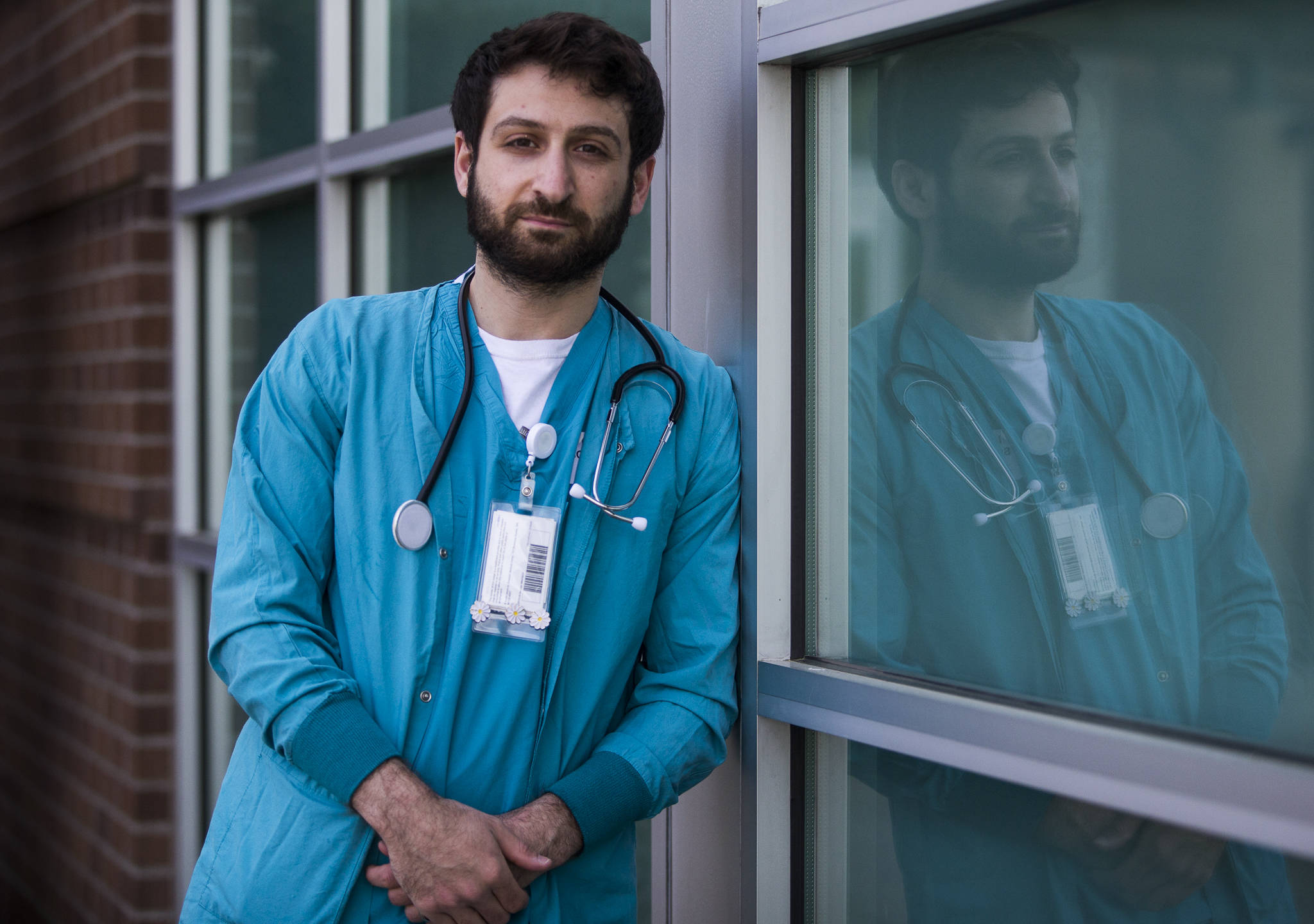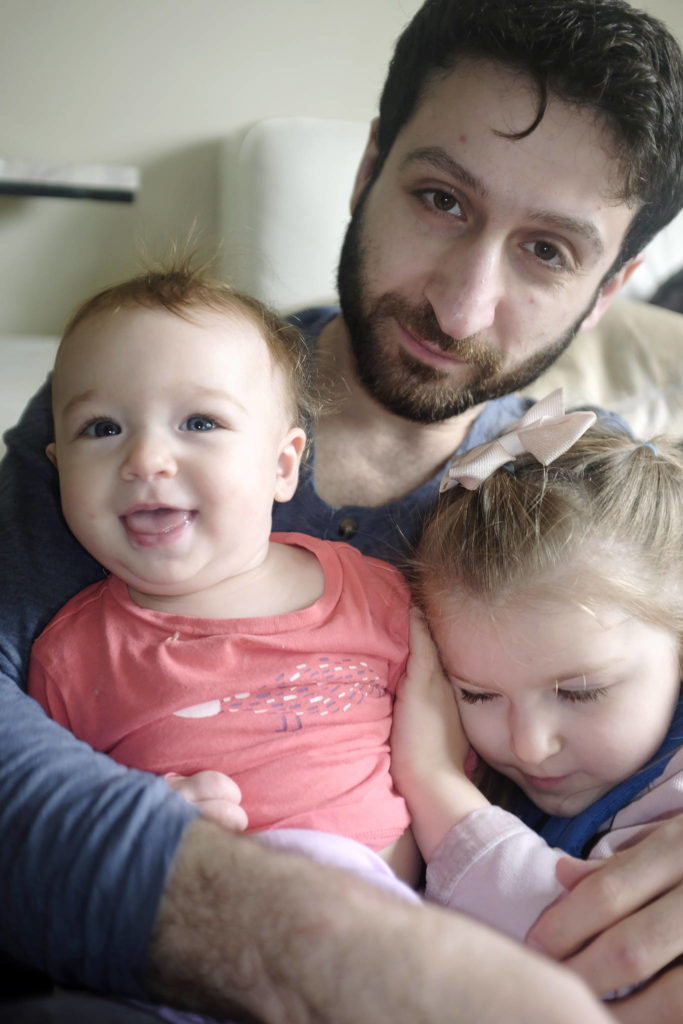All day, Nech Zebari is around people with COVID-19.
He’s a hospital nurse and the father of two young daughters.
He’s also my son-in-law.
“Stay at home,” I ordered him.
Hey, if the governor can do it, so can I, with my emergency mother-in-law powers. Right?
Nech never considered this.
“Somebody has to do it. We’re trained to do it. It’s part of the oath we take,” he said. “We cannot abandon somebody just because they are sick and there’s a chance we can get sick.”
If he gets sick, so can my daughter and grandkids.
Nech has considered that.
“What if one day I’m sick or you’re sick?” he said. “We expect to be helped and not abandoned.”
Still, it’s scary, especially when I look at the daily Snohomish Health District case counts. On April 3, there were 76 healthcare workers who had tested positive for COVID-19 in our county. By April 17, it had grown to 171 cases, not including those employed at long-term care facilities.
There aren’t figures available for other at-risk groups, such as cashiers, custodians and first responders.
All of us with loved ones on the frontline, whether it’s the supermarket or the ICU, are on edge. Maybe more so than the workers who, like Nech, feel a sense of duty to carry on.
“Helping people at times of need is the best thing you can do for somebody,” he said. “Even if I’m at risk, I am protected by the good I’m doing. I rely on faith. The feeling of good overpowers the feeling of fear.”
Care takes human hands and touch. Nech and other nurses are in deliberate and necessary contact with those infected. Unlike that first United States coronavirus patient in Everett a mere 12 weeks ago, there isn’t a robot doctor with a stethoscope and a microphone going in there taking vitals. When a patient pushes a call button, nurses go to the bedside.
A virus has one mission: to continue, with no regard for the destruction it leaves in its path.
“All living things work to pass on their genetic code,” said Dr. Lawrence Judy, an Indiana physician and clinical professor. “A virus is life reduced to a minimum. It is not burdened by eating, drinking or moving around that other life forms devote time and energy toward. Its purpose is getting control of something else to make more copies of the virus genome.”
In other words, it’s us against this virus that has nothing but free time on its hands.
“There’s no textbook definition for this virus,” Nech said. “It’s the unknown. There’s trends, there’s statistics where you’re more likely to be OK if you’re this age, or harmed at this age, but there’s still a lot in-between. A big gray zone of people where we don’t know why it’s happening to them.”
Nurses are becoming patients, even millennials like Nech.
Nearly 9,300 U.S. healthcare workers contracted COVID-19 and 27 have died, according to the Centers for Disease Control and Prevention.
Earlier this month, over 700 employees in a single Detroit hospital system were diagnosed with the coronavirus. In Ohio, healthcare workers account for about 1 of every 5 positive tests in the state.
At most places, workers are not tested unless they have symptoms, so it’s hard to determine accurate case counts.
The stress of the job builds.
“This causes a lot of anxiety. Loss of sleep. Panic attacks,” Nech said. “It’s more on top of what we are already dealing with.”
Nech is only 27. He has his whole career ahead of him. He could have worked about anywhere after becoming a registered nurse three years ago. He chose a hospital, not knowing it would be like a war zone.
“You don’t get prepared for something like this,” he said.
Not that it would have deterred him — quite the opposite.
“This is my time to shine, in terms of helping people,” he said.
Nech comes from a close family who moved to Washington as refugees from a Kurdish area of northern Iraq in the 1990s. He’s the third-youngest of eight kids, and there’s a slew of grandkids. Before the pandemic, many would gather at his parents’ home every day. He hasn’t seen most in a month.
Steps are taken to confine the germs to the hospital. At home after a 12-hour shift, Nech goes straight to the garage, undresses and takes a long shower before seeing his wife and children. His scrubs are washed separately.
My daughter, Megan, stays home with the girls, Mimi and Aya.
The virus is an ever-present elephant in the room.
“I try not to think about it,” Megan said. “Instead, I focus on what I can do to support him while keeping us safe at home.”
Mimi is 3, going on 13. She’s a bucket of sass.
But these days Mimi has other things on her mind — “the sickness,” as she puts it.
“It’s a lot of bugs,” she said.
She worries about her dad.
Aya is 10 months old. She has a never-ending smile on her face and not a care in the world.
Baby Aya recently had a fever.
“Oh, she’s just teething,” I told my daughter in my assuring Dr. Mom tone to conceal my worry.
“She doesn’t have any teeth,” Megan said.
“Well, she’s getting them,” I said without missing a beat.
The fever went away. A few days later, a tooth poked through, just as Dr. Mom said.
Andrea Brown: abrown@heraldnet.com; 425-339-3443. Twitter @reporterbrown.
Talk to us
> Give us your news tips.
> Send us a letter to the editor.
> More Herald contact information.



























